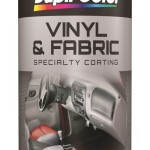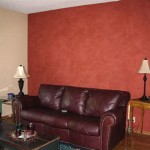Old House Wall Painting Ideas: Preserving Charm and Adding Modern Flair
Painting the walls of an old house presents a unique opportunity to breathe new life into a historical structure while respecting its original character. Striking a balance between preserving the past and incorporating modern aesthetics requires careful consideration of color palettes, paint types, and surface preparation techniques. This article explores various approaches to wall painting in old houses, emphasizing strategies for enhancing their beauty and longevity.
The process begins with a thorough assessment of the existing wall conditions. Old houses often have walls constructed from materials like plaster, wood panels, or even lath and plaster. Each material requires specific preparation and painting techniques. Ignoring these nuances can lead to paint failure, further damage to the underlying structure, and a less-than-satisfactory finish. Identifying the existing paint layers is also crucial, as lead-based paint may be present, necessitating professional abatement.
Selecting the right paint is paramount. Modern paints offer advantages in terms of durability, ease of application, and environmental impact. However, some older homes benefit from paints that are more breathable, allowing moisture to escape and preventing damage. The choice of finish, whether matte, satin, or gloss, also affects the overall look and feel of the room. Each of these factors needs to be weighed carefully before beginning the painting process.
Choosing the Right Color Palette for an Old House
Selecting the appropriate color palette is one of the most impactful decisions when painting the walls of an old house. The goal is to create a cohesive and harmonious environment that complements the architectural style and historical period of the home. Consider the existing features of the house, such as the trim, flooring, and furniture, when making color choices. Avoid selecting colors in isolation, as they must relate to the entire space.
Historical paint colors are often a good starting point. Many paint manufacturers offer historical color collections that are based on authentic pigments and formulas used in past eras. These colors can provide a sense of authenticity and help preserve the character of the house. However, it is not necessary to adhere strictly to historical colors. Modern interpretations of classic colors can also work well, providing a fresh and updated look while still respecting the house's heritage.
When selecting colors, consider the lighting in the room. Natural light can change the appearance of colors significantly. Test paint colors in the room at different times of day to see how they look in varying light conditions. Use large paint swatches to get a better sense of the overall effect. Artificial lighting also plays a role, so be sure to consider the type of light fixtures and bulbs that will be used in the room.
The size of the room should also influence the color selection. Lighter colors can make a small room feel larger and more open, while darker colors can create a cozy and intimate atmosphere in a larger space. Consider using a monochromatic color scheme, where different shades of the same color are used throughout the room, to create a sense of cohesion. Accent walls can be used to add visual interest and break up large expanses of wall space. However, use accent walls sparingly, as they can sometimes disrupt the flow of the room.
Ultimately, the best color palette will reflect the homeowner's personal style and preferences while respecting the historical context of the house. Experiment with different color combinations and consider seeking advice from a professional interior designer to achieve the desired result.
Preparing Old House Walls for Painting
Proper surface preparation is crucial for achieving a long-lasting and professional-looking paint job in an old house. Neglecting this step can lead to paint failure, such as peeling, cracking, and blistering. Old house walls often have imperfections, such as cracks, holes, and uneven surfaces, that need to be addressed before painting. The preparation process typically involves cleaning, patching, sanding, and priming.
The first step is to thoroughly clean the walls to remove any dirt, dust, grease, or mildew. Use a mild detergent and warm water to wash the walls, paying particular attention to areas that are prone to staining, such as kitchens and bathrooms. Rinse the walls with clean water and allow them to dry completely before proceeding.
Next, inspect the walls for any cracks, holes, or other imperfections. Use a patching compound to fill in these areas, following the manufacturer's instructions. For larger cracks or holes, it may be necessary to apply multiple layers of patching compound, allowing each layer to dry completely before applying the next. Once the patching compound is dry, sand it smooth with fine-grit sandpaper to blend it seamlessly with the surrounding surface.
Sanding the walls is an essential step for creating a smooth and even surface for painting. Use a sanding block or pole sander to lightly sand the entire wall, paying particular attention to areas that have been patched or repaired. Remove any loose paint or debris and feather the edges of existing paint to create a smooth transition. After sanding, thoroughly remove any dust with a damp cloth or vacuum cleaner.
Priming the walls is the final step in the preparation process. Primer helps to seal the surface, improve adhesion, and create a uniform base for the paint. Choose a primer that is specifically designed for the type of wall material and paint being used. Apply the primer evenly, following the manufacturer's instructions. Allow the primer to dry completely before applying the first coat of paint. For walls with stains or odors, use a stain-blocking primer to prevent these issues from bleeding through the paint.
In old houses, it is crucial to test for lead-based paint before sanding or scraping. Lead-based paint can pose a health hazard, especially to children and pregnant women. If lead-based paint is present, it is recommended to hire a professional abatement contractor to remove it safely. Alternatively, encapsulate the lead-based paint with a special primer that is designed to seal it in and prevent it from leaching out.
By taking the time to properly prepare the walls, homeowners can ensure a successful and long-lasting paint job that will enhance the beauty and value of their old house.
Special Considerations for Painting Different Wall Materials
Old houses often feature a variety of wall materials, each requiring specific painting techniques and considerations. Plaster, wood paneling, and even wallpapered surfaces present unique challenges and opportunities. Understanding the characteristics of these materials is essential for achieving a successful and durable paint finish.
Plaster walls are common in older homes and can be delicate and prone to cracking. Before painting plaster walls, it is crucial to identify and repair any cracks or damage. Use a flexible patching compound that is specifically designed for plaster to minimize the risk of future cracking. Apply the patching compound in thin layers and allow each layer to dry completely before sanding smooth. When painting plaster walls, use a breathable paint that will allow moisture to escape and prevent the plaster from deteriorating. Avoid using glossy paints, as they can highlight imperfections.
Wood paneling can add warmth and character to an old house. Before painting wood paneling, clean it thoroughly to remove any dirt, dust, or grease. Sand the paneling lightly to create a smooth surface for painting. Apply a primer that is specifically designed for wood to ensure proper adhesion. Consider using a paint that is formulated for wood to provide a durable and long-lasting finish. Alternatively, consider restoring the wood instead of painting it to preserve its natural beauty.
Wallpapered walls can be a challenge to paint. In some cases, it may be best to remove the wallpaper before painting. However, if the wallpaper is in good condition and tightly adhered to the wall, it may be possible to paint over it. Prepare the wallpapered surface by cleaning it thoroughly and patching any damaged areas. Apply a primer that is specifically designed for painting over wallpaper to seal the surface and prevent the wallpaper from peeling or bubbling. Use a high-quality paint that is designed for walls to provide a durable and washable finish.
Lath and plaster walls are particularly delicate and require extra care. The lath behind the plaster is made of narrow strips of wood, and the plaster can easily crack or crumble if not handled properly. Before painting lath and plaster walls, inspect them carefully for any loose or damaged areas. Use a specialized patching compound that is designed for lath and plaster to repair any cracks or holes. When painting lath and plaster walls, use a light touch and avoid applying too much pressure. Consider using a paint sprayer to achieve a smooth and even finish.
Brick walls, both interior and exterior, also require special consideration. Clean the brick thoroughly to remove any dirt, dust, or efflorescence (a white, powdery deposit). Apply a masonry primer to seal the brick and improve adhesion. Use a paint that is specifically designed for masonry to provide a durable and water-resistant finish. Consider the breathability of the paint to prevent moisture from becoming trapped within the brick, which can lead to damage.
By understanding the specific characteristics of different wall materials and using the appropriate preparation and painting techniques, homeowners can achieve beautiful and long-lasting results that will enhance the character and value of their old houses.

5 Best Paint Colors For Old Houses Interior Ideas

5 Best Paint Colors For Old Houses Interior Ideas

Visit Raghurajpur The Craft Village Of Odisha Where Wall Every House Is Canvas An Artist

Simple Wall Painting Ideas To Make Your Home Shine

50 Best Living Room Paint Ideas Colors

30 Living Room Paint Colors Inspiration For An Inviting Space Benjamin Moore

Two Tone Walls Ideas Create A Color Blocking Accent Wall The Nordroom

House Renovation Week 12 Paint That Paneling People

35 Best Paint Colors For Living Rooms

Studi Oh
Related Posts








